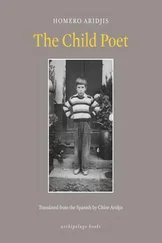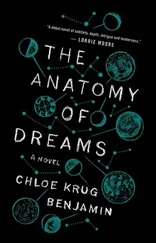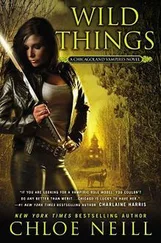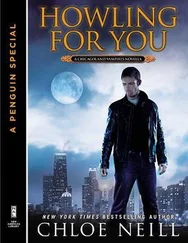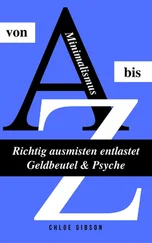Comets and suffragettes. Ted always equated the two. He feared the approach of these comets that drew nearer, their brightness increasing, the light of their nucleus ever more vivid, great curvatures of tails stretching across the heavens, a sudden advance in size and splendour. One glimpse, one omen, that’s all it took: decades later, the events of those years still had him in their grip.
Ted had been pacing in my thoughts that afternoon when the art restorer entered the room with her students. Along with my great-grandfather, it would be this woman who, in Room 65 of the Sainsbury Wing, shed light on an obscure aspect of the museum.
Mid-fifties, attractive, with straight chestnut hair, she stopped in front of a small van Eyck, an intriguing portrait of a man in a red turban, possibly the artist himself, a painting I had always liked despite knowing little about it. The students fanned out like apprentice surgeons at a dissection and pinned their eyes on the subject.
From my chair, I watched and listened.
‘Paintings too are vulnerable to the ravages of time,’ the restorer began. ‘They crack and they flake, their colours change, things fade or darken. Any work you see today will have looked rather different when it was created. And if you look closely — not too closely — you will note that just about every painting in this Gallery contains a vast network of cracks.
‘And these cracks,’ she went on, ‘are what we call craquelure.’
She spelled out the word. A dozen hands took note.
‘Inherent craquelure, the release of stress, occurs with age. As you know, most of the tension in a painting is located in its four corners. Accidental craquelure, such as spiral cracks and spider cracks, is the result of external impact.’
The hands continued to scribble.
‘Look at this van Eyck. Your attention is probably first drawn to the red turban, to the magisterial way in which each fold has been painted. From there, you move on to the face. It is more cracked than wrinkled, you can see — the paint’s age shows even more than the man’s.
‘This type of grid craquelure is created when primary cracks, which follow the direction of the brushstroke, and secondary cracks run in right angles to one another. Aging cracks often follow the lines established by drying cracks. Remember: mechanical forces will always seek out the path of least resistance. ’
Some students leaned forwards, pressing dangerously close to the van Eyck. My impulse to intervene and ask them to take a few steps back was crushed by my fever to hear more.
‘Over time,’ the art restorer continued, ‘I hope you will all learn to identify fake craquelure, which forgers add to a painting in order to give it the illusion of age. They scrape the edge of the canvas on a table, bake it in the oven, and sprinkle sugar on top until the surface cracks in just the right way. There are other techniques too, but this is one of the simplest and most effective.
‘Yet in the words of the great Friedländer, Forged craquelure is arbitrary, monotonous and pedantic — whereas natural craquelure throbs with rich variety . So, to conclude: craquelure grants a painting its history, its authenticity, a whole topography the painter himself could never have envisioned… ’
When they left the room twenty minutes later I closed my eyes in order to process her words. Like a hot grille, the image of the van Eyck pressed into my eyelids despite the cracks being indistinguishable from where I sat in my chair. After hundreds and hundreds of hours in the Gallery, how had I failed to consider something so vital? I had always been drawn to decomposition, to the knowledge that everything in the universe tends from order to disorder, and the thought of the arrow of time also moving through paintings overwhelmed me. Painters create order from disorder, but the moment that order has been created, the slow march towards disorder begins again.
I’d been handed a secret. Visitors could stand and admire what they saw on the walls, point out to one another the various colours and compositions, but my inner lens would now be focused on something more hidden, an intimacy between me and the paintings that a thousand gazes could not disturb. I had always sought quiet in the world and there were few movements quieter, I realised, than paint cracking over time.
Days after the art restorer’s visit those three syllables — cra-que-lure — continued to rumble in my head. The allure of the crack, the lure of the crackle, the lair of the kraken. The crack of dawn, the crack of doom.
Little by little, I began to notice small changes in mood. At home, I felt ever more susceptible to things around me, above all to the abundance of creams, oils, facial masques and body lotions that Jane kept in our bathroom, combatants against the passage of time. Ever since I’d known her she’d been spending a small fortune on this mission to keep her skin supple and smooth, tender and silky for the one , and now each time I entered I felt the jars and bottles mocking me with their sweet pungent scents. In the past she’d been drawn to unavailable characters — men paralysed by depression, addicts or alcoholics, urban hermits or living overseas; there was always something safely in the way, an expiry date stamped on the package. And once one man was out of the picture, it took a while to erase the rough Braille he’d left on her looks and perfect herself for the next. But now, perhaps, if she had met the one she could relax the campaign.
Meanwhile, in our flat, the moths continued to gather thickly. Jane laid out more traps, now in all the rooms, strips on the tops of cabinets, dressers and wardrobes. Yet the ones on my landscapes weren’t decomposing rapidly enough, stubbornly resisting disintegration as if aware they would be replaced the moment they showed so much as a tear. Morning and night I would check for developments but no, these little brown torsos and wings remained intact, holding fast, in one final stance, to their makeshift landscapes.
At work I found myself challenged by ever greater feats of self-control. My patience was tested in new ways. For instance, I was both startled and not a little annoyed to note the presence of a new painting in Room 86 and the absence of one that’d hung there for as long as I had been working at the National Gallery. It was typical of curators not to let guards know about changes — overnight, paintings would be switched around or taken down and the next day you would send someone to the wrong room to see a painting that was no longer there.
In the Sainsbury Wing, one of the first things our new director had done was move the location of the Battle of San Romano; he decided the Italian paintings should be shown chronologically and that this Uccello should come earlier, so one day we arrived at work and saw it had been moved from Room 55 to 54. Ever since, people have walked past it. Had we been asked our opinion we would have told him that its original place on a wall that could be seen as one approached from several rooms away was more powerful than its current peripheral location. But no one takes our views into account.
During my tea break I went down to Human Resources and complained about the change in Room 86, struggling to contain myself as I explained that in order to do our job well we needed to be kept up to date on every alteration in the Gallery, that they ran the risk of making their guards look like fools by keeping us in the dark, and that if it were ever repeated I would resign, a lie naturally but I wanted to throw in some drama to make more of an impression. The woman nodded from behind her desk, glancing over at her colleagues to see their reaction, everyone was absorbed in a task, and she said note taken without taking much note, and before I knew it, it was time to get back to work.
Читать дальше

